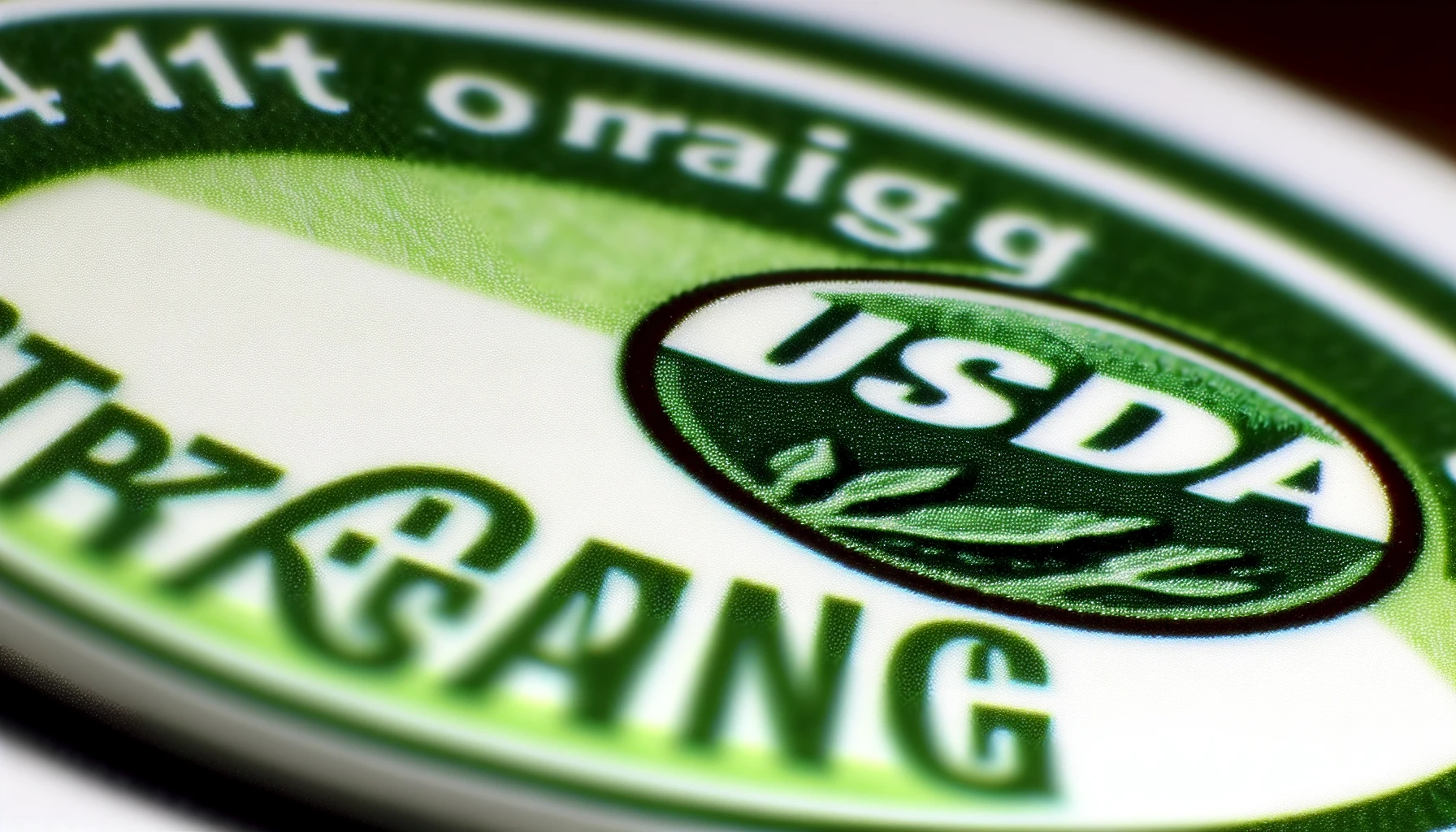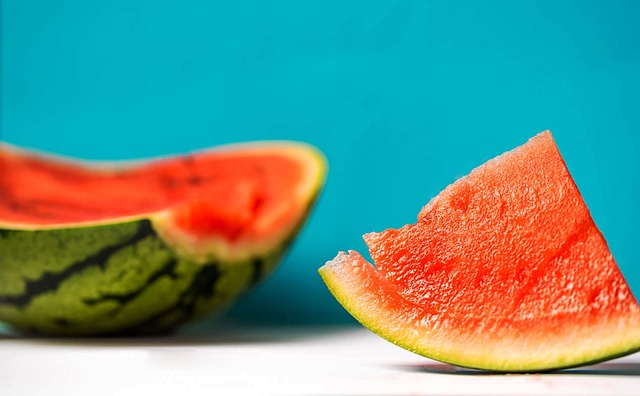Are you curious about the meaning behind the USDA Organic Seal on your food items? You’re not alone! Understanding what the seal represents can help you make informed decisions about the food you consume. In this blog post, we’ll explore the USDA Organic Seal, debunk common myths surrounding organic products, and discuss the benefits of choosing organic food. Let’s dive into the world of organic food to make healthier and eco-friendly choices!
Key Takeaways
Understand the importance of USDA Organic Seal and its benefits for health, environment & ethical considerations.
Make informed decisions when shopping by opting for organic versions of fruits, vegetables, beef etc.
Debunk common myths about USDA Organic products to empower better food choices!
Debunking Common Myths About USDA Organic Products

There are several misconceptions surrounding organic products that often cause confusion. The upcoming sections will help clarify these misconceptions, especially about genetic engineering, non-organic ingredients, and the difference between organic and natural products. Debunking these myths will provide you with the knowledge to make better choices about your food.
Genetic Engineering and Organic Products
One of the most common misconceptions about organic products is that they can contain genetically engineered ingredients or GMOs. However, this is far from the truth! The USDA organic regulations strictly forbid the use of GMOs in the production and handling of organic products. Farmers and processors of products must also prove that they are not using GMOs and are taking steps to safeguard their products from GMO contamination.
So, when you see the USDA organic seal, rest assured that the product is free from GMOs!
Non-Organic vs. Certified Organic Ingredients
Another misconception is that non-organic agricultural ingredients are just as good as certified organic agricultural ingredients. But the truth is, certified organic ingredients have been verified by a certification body to meet strict organic standards, ensuring the highest quality ingredients with no synthetic pesticides, fertilizers, or GMOs.
Non-organic ingredients, on the other hand, do not meet these standards and may contain residues of pesticides and other chemicals used in conventional farming practices. Hence, if you are deciding between non-organic and certified organic ingredients, favour the certified organic ones!
Organic vs. Natural: What’s the Difference?
The terms “organic” and “natural” are often used interchangeably, leading to confusion for consumers. However, they are not the same! Organic products are held to higher standards and certifications, ensuring their organic status. In contrast, the term “natural” does not have a clear-cut definition and can be used more loosely.
Organic products are grown or made without any artificial pesticides, fertilizers, or herbicides, while natural products may still contain some synthetic ingredients. So, when it comes to choosing between organic and natural products, opt for organic to ensure higher quality and stricter standards.
Understanding the USDA Organic Seal

Having debunked some common myths, it’s time to focus our attention on the USDA Organic Seal itself. The seal represents the stringent standards set by the United States Department of Agriculture for organic products. In the following subsections, we’ll explore the National Organic Program and the importance of the Organic Seal for consumers.
Understanding the significance of the seal will help you make better decisions about the food you consume.
The National Organic Program

The National Organic Program (NOP) is a vital program that upholds and enforces organic standards in the United States. Administered by the USDA Agricultural Marketing Service (AMS), the NOP is responsible for providing regulatory oversight of the USDA’s organic standards and certification process. The program works with the National Organic Standards Board to develop and update organic standards to promote the organic industry.
The NOP, by maintaining consistent national standards for organically produced agricultural products, plays a critical role in protecting the integrity of the organic label.
Importance of the Organic Seal
The USDA Organic Seal is not just an emblem; it’s a mark of assurance that a product has met strict standards for organic production, handling, and labeling. When you see the seal on a product, you can be confident that it is certified organic and contains at least 95 percent organic content. This means that the product has been produced without the use of synthetic pesticides, GMOs, and other prohibited substances, ensuring a high-quality and safe product.
Choosing products with the USDA Organic Seal supports sustainable farming practices and positively impacts both the environment and your health.
Demystifying USDA Organic Regulations

Having explored the USDA Organic Seal and the National Organic Program, let’s delve deeper into the specific USDA organic standards and regulations that govern organic production, handling, and labeling. In the following subsections, we’ll examine organic production practices, handling and processing of organic products, and labeling requirements.
Understanding these regulations will give you a clearer picture of what goes into the production of organic products and why they are a better choice for your health and the environment.
Organic Production Practices
Organic production practices are designed to uphold the principles of organic agriculture, which include conserving biodiversity, decreasing chemical pollution, and improving soil health. Organic farming relies on natural substances and farming methods, such as using manure and compost as fertilizers, and avoiding synthetic substances like pesticides and herbicides.
Adhering to these practices, organic producers not only benefit the environment through organic farming but also produce healthier and more sustainable food options for consumers.
Handling and Processing of Organic Products
When it comes to handling and processing organic products, strict regulations are in place to ensure their organic status is maintained throughout the entire process. Organic processing facilities must implement key procedures to prevent contamination and maintain organic integrity, such as thorough cleaning, preparation, and transportation.
Also, organic products must be kept separate from non-organic products during processing and storage to prevent cross-contamination and ensure maximum quality and safety.
Labeling Requirements
Labeling requirements for USDA organic products are stringent, ensuring that consumers can easily identify and trust the products they purchase. For a product to be labeled as “100 Percent Organic,” it must be made up of 100 percent certified organic ingredients, and the label must include the USDA organic seal. With such strict guidelines, it’s no wonder that the sell label for organic producers of these products is highly valued.
Organic produce must be certified to have grown without any prohibited substances for at least three years before harvesting. This is a requirement in order to qualify the product as organic. Understanding these labeling requirements helps you make better decisions when selecting organic products.
The Organic Certification Process
Obtaining and maintaining USDA organic certification is an important aspect of ensuring the quality and integrity of organic products. In the following subsections, we’ll discuss the steps involved in the organic certification process, including:
Application
Review
Inspection
Verification
Maintaining certification
Understanding this process gives you a deeper appreciation for the efforts that go into producing USDA certified organic products.
Application and Review
The first step in obtaining USDA organic certification is developing an organic system plan (OSP) and submitting it to a certifying agent for review. This plan outlines how your operation will comply with the USDA organic regulations and includes information on production, handling, and labeling practices.
Once your application is submitted, the certifying agent will review your OSP and determine if your operation meets the organic standards. Following the application and review process puts you on the right path to obtaining USDA organic certification.
Inspection and Verification
After your application has been reviewed, the next step in the organic certification process is inspection and verification. A certifier’s inspector will conduct an on-site inspection of your operation to evaluate the implementation of your OSP and compliance with USDA organic regulations. This inspection is crucial in ensuring that your operation adheres to organic practices and standards.
Successfully completing the inspection and verification process brings you one step closer to obtaining USDA organic certification.
Maintaining Certification
Once you’ve obtained USDA organic certification, it’s essential to maintain it by ensuring ongoing compliance with the organic standards. This includes keeping records of your OSP, organic inputs, field and crop records, livestock records, and sales and transaction records for at least five years. In addition, annual on-site inspections are required to monitor compliance and ensure the highest quality standards are met.
Maintaining your organic certification enables you to continue providing consumers with high-quality, trustworthy organic products.
Benefits of Choosing USDA Organic Products

Choosing USDA organic products comes with a variety of benefits, from environmental and health advantages to ethical considerations. In the following subsections, we’ll explore each of these benefits in more detail, providing you with even more reasons to choose organic products for a healthier and more sustainable lifestyle.
Environmental Benefits
Organic farming offers numerous environmental benefits, such as conserving biodiversity and resources, decreasing chemical pollution, and improving soil health. By avoiding synthetic pesticides and fertilizers, organic farming reduces water pollution and protects ecosystems. In addition, organic farming practices promote carbon sequestration, capturing and storing more carbon dioxide (CO2) in the soil and helping to mitigate climate change.
Choosing organic products not only benefits your health but also contributes to a more sustainable environment and supports the organic sector.
Health Benefits
There are potential health benefits to consuming organic products from animals, such as more beneficial nutrients, fewer pesticides and heavy metals, and potentially more antioxidants. In addition, organic meat and dairy products come from animals raised without the use of antibiotics or growth hormones.
While the overall risk of bacterial contamination is the same for organic and non-organic foods, organic products have fewer pesticide residues compared to conventionally grown produce. Ultimately, the decision to choose organic or non-organic products is a personal one based on individual preferences and priorities.
Ethical Considerations
Choosing USDA organic products is an ethical choice that not only supports sustainable farming practices but also helps to protect the environment. Organic farming practices can effectively:
Reduce soil erosion
Conserve biodiversity
Reduce chemical pollution
Significantly reduce greenhouse gas emissions
Improve soil health
In addition, choosing organic products promotes fair labor practices and supports animal welfare. Opting for organic products means making a conscientious choice for a better world.
Foods That Are Worth Buying Organic
While all organic products offer benefits, there are certain foods that may be worth prioritizing when purchasing organic products. Some of these foods include:
strawberries
spinach
kale
peaches
apples
grapes
leafy greens
organic beef
chicken
eggs
full-fat dairy products
Choosing these organic foods can enhance the health benefits of your diet and minimize your exposure to pesticides and other harmful substances.
FAQs
To wrap up our exploration of USDA organic products, let’s address some frequently asked questions that might be lingering in your mind. These questions cover a range of topics, including:
What does USDA organic mean?
What is the certification process for organic products?
What are the benefits of choosing organic products?
Are organic products more expensive?
Are organic products healthier?
Are organic products better for the environment?
Understanding the answers to these questions will help you make better decisions about your food choices.
Summary
In conclusion, understanding the USDA Organic Seal and its implications for the food we consume is essential for making well-informed choices about our diet and the environment. By debunking common myths, exploring the organic certification process, and highlighting the benefits of choosing organic products, we can make healthier and more eco-friendly decisions. So, the next time you’re at the grocery store, consider choosing organic products for a healthier lifestyle and a more sustainable world.
Frequently Asked Questions
What does it take for a product to be certified as 100% USDA organic?
For a product to be certified as 100% USDA Organic, it must contain only organically produced ingredients and have the USDA Organic Seal included on the label. The name of the certifying agent also needs to be present on the label.
What are the 3 levels of USDA organic?
The USDA Organic certification is comprised of four distinct labeling categories: 100 percent organic, organic, “made with” organic ingredients, and specific organic ingredients label. The highest level of certification is 100 percent organic, meaning products are made up entirely of certified organic ingredients.
Is USDA organic worth it?
Organic foods are worth it if you want the advantages of produce that is free of pesticides and has less antibiotic exposure, as well as support an agricultural system that avoids synthetic fertilizers and pesticides. However, they can be expensive and there is no strong evidence that organic food is better for your health than conventional options. Ultimately, eating more fruits and vegetables is the most important factor for good health.
What does the USDA Organic Seal represent?
The USDA Organic Seal is a symbol of trust representing the highest standards set by the US Department of Agriculture for certified organic products, guaranteeing that they have been produced without synthetic pesticides, GMOs, and other prohibited substances.
Are organic products healthier than non-organic products?
Overall, there is no definitive answer that organic products are healthier than non-organic products. However, organic products have fewer pesticide residues and may provide small to moderate increases in certain nutrients.


